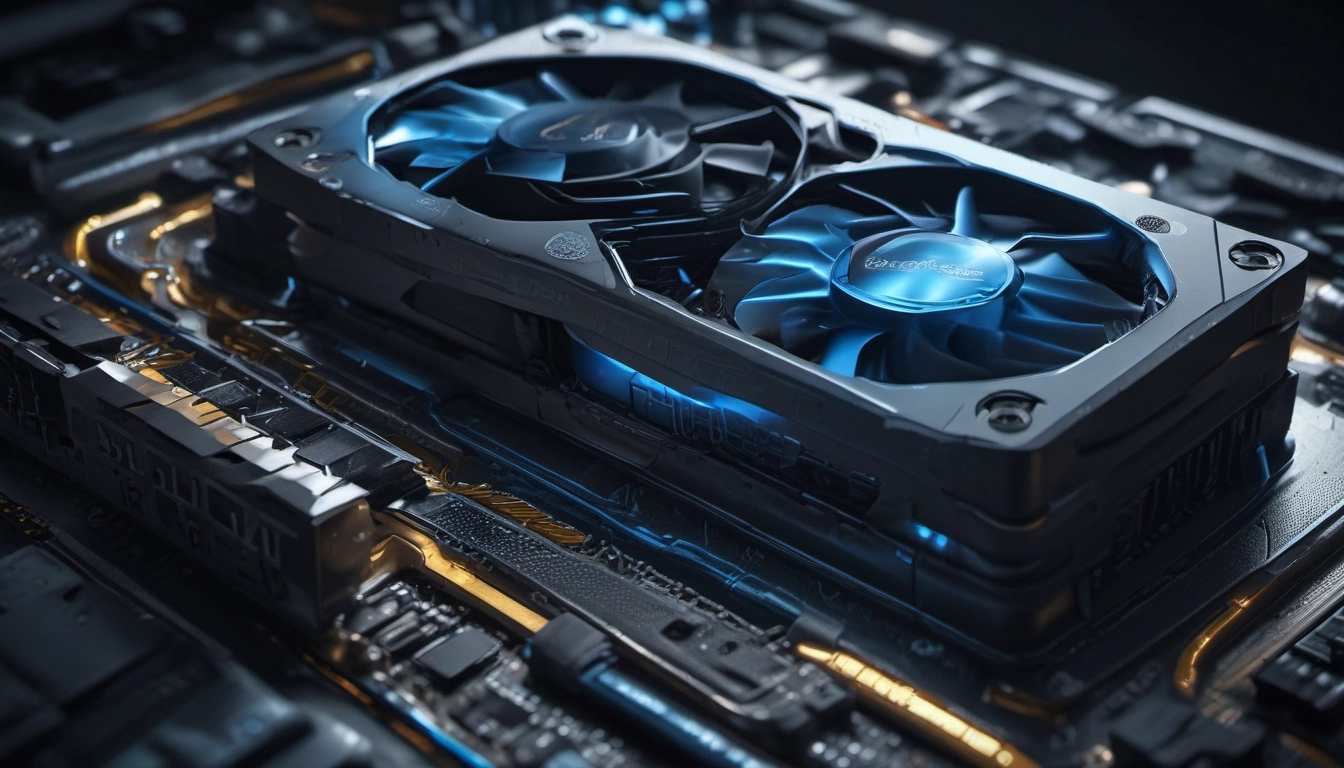AMD MI50 LLM Benchmark: The Budget VRAM King
How to build and run LLMs on used AMD Instinct MI50 cards: benchmarks, a 4x MI50 128GB build, ROCm tips, and common gotchas.

Executive summary
The AMD Instinct MI50 is a budget-friendly way to get large GPU memory for LLM work. Four used MI50 cards (32GB each) can give you ~128GB GPU RAM for under $1,000 and run big models like Qwen3 235B and Llama 2 70B at useful speeds. This guide shows expected performance, a parts checklist, ROCm notes, and common gotchas.
Why the MI50?
Short answer: huge VRAM for the price. Key points:
- Price per VRAM: Used MI50s are very cheap. Builders report 4x MI50 machines for roughly $600–$800 total and 128GB of VRAM for that price (see a real-world writeup here).
- Open software: MI50 runs on the ROCm open-source stack you can install on Linux. See ROCm install notes here.
- Good for homelabs: If your main limit is VRAM, MI50s let you prototype large models without cloud bills.
What to expect: real benchmark highlights
Reported, real-world results are useful guides but not guarantees. From public reports and tests:
- Qwen3 235B on 4x MI50 (128GB total): ~20+ tokens/second in one community report (sanj.dev).
- Llama 2 70B on a similar 4x MI50 rig: ~35+ tokens/second reported.
- Smaller models like Gemma 2 9B can run in <10GB VRAM on ROCm; example: Gemma 2 9B used ~9GB VRAM at larger context lengths (PatsHead).
These numbers vary with quantization, sequence length, batch size, and software stack (Ollama, vLLM, llama.cpp, etc.).
Quick parts list: a 128GB VRAM homelab for under $1,000
Build tip: use used MI50 cards listed as 32GB each. A typical 4x MI50 setup:
- 4x AMD Instinct MI50 (32GB) - used market: $600-$800 total (price varies).
- ATX motherboard with 4x PCIe x16 slots and adequate spacing (or use risers).
- CPU: modest 6-to-8-core is fine; avoid weak motherboards that limit PCIe lanes.
- PSU: 1,200W+ recommended if all cards draw near 250W under load (community advice).
- Case or open rig, good airflow, and fan control—MI50s can be loud and hot.
Why these choices matter: you need space, power, and proper PCIe routing. Community posts mention using PCIe extenders for spacing and controlling fans with a PWM controller for noise (reddit).
Software stack and installation notes
MI50 works best on Linux with ROCm. Key notes:
- ROCm version: many builders recommend ROCm 6.0+ for good compatibility with MI50 and modern tooling. See ROCm install notes here.
- Model servers and runtimes: Ollama, vLLM, and llama.cpp have differing support. vLLM docs note optimal support for MI200/MI300 families, but community users run vLLM and Ollama on older cards with mixed results (vLLM).
- Tools: use
rocm-smito monitor GPU power and VRAM. Example monitoring approach is shown in community benchmarking work (MI50 benchmarks).
Benchmarks: methodology and tips
When you run your own tests, control these variables:
- Model and tokenizer (70B vs 235B).
- Quantization: Q4_0 and Q4_1 often give much better performance on Vega cards than Q2 or some Q8 formats; community guidance suggests avoiding Q2 on Vega 10-based devices (ggml issue).
- Sequence length & batch size: longer sequences and larger batches often improve throughput on ROCm.
Simple benchmark steps:
- Install ROCm and your chosen LLM runtime.
- Load a quantized model and measure tokens/second at a standard sequence length.
- Log VRAM and GPU power with
rocm-smi.
Performance tuning & common gotchas
Expect a few friction points. Here are top issues and fixes:
- ROCm support changes: AMD has removed MI50 from some profiler support lists in ROCm updates. Community forks and pinned ROCm versions help. See discussion about ROCm dropping MI50 from profiler in a news post (Phoronix).
- Driver and stack versions: Match ROCm, PyTorch/TF, and your runtime. Some modern builds target MI200/MI300 and may skip optimizations for Vega 10 (MI50).
- FP16 and fp16 fallbacks: Some Vega-era cards lack newer fp16 dot-product instructions, so fp16 paths may be slower unless software uses alternate kernels or upcasting tricks (forum).
- Cooling and noise: MI50 cards can be loud. Builders often add external fan controllers or open rigs.
- Power and PCIe: Use a PSU with headroom and check your motherboard for lane allocation; risers or extenders can be needed for spacing.
When not to buy MI50
MI50 is for people who need big VRAM for low cost. Consider alternatives if:
- You need top single-card speed or the absolute newest CUDA-only features.
- Your project needs vendor support, long-term validated drivers, or enterprise-grade tools tied to CUDA.
- You need guaranteed performance for production inference on the latest LLM frameworks that only fully optimize for NVIDIA hardware.
Checklist: build and test in 8 steps
- Buy 4x MI50 (confirm 32GB each).
- Pick a roomy motherboard and 1,200W+ PSU.
- Install Linux and ROCm (match versions that community tests used).
- Install your LLM runtime (Ollama, vLLM, llama.cpp) and test a small model first.
- Load a quantized model and measure tokens/sec. Tune batch/seq length.
- Monitor VRAM and power with
rocm-smi. - If perf is low, try different quant formats (Q4_0/Q4_1 preferred on Vega).
- Document your config and pin working ROCm/runtime versions for repeatability.
Resources and further reading
- ROCm install & notes: AMD ROCm installation.
- Community MI50 benchmarks and method: Initial Assessment of MI50.
- Real-world build and benchmarks: AMD vs NVIDIA AI Performance (sanj.dev).
- vLLM ROCm installation notes: vLLM ROCm install.
- User experiences: Reddit threads on MI50 use with Ollama and homelabs: reddit and Level1Techs.
Bottom line
If you want a lot of GPU RAM at a very low cost and you're comfortable with Linux, hardware tinkering, and ROCm, MI50s are a great budget choice. They let hobbyists and small teams test large LLMs for a fraction of the cloud or new GPU cost. If you need worry-free enterprise support or absolute peak per-card speed, consider modern NVIDIA or newer AMD accelerators instead.


